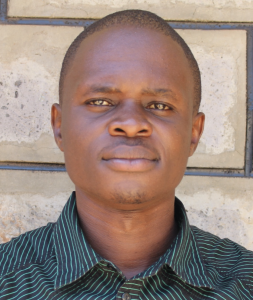July, 2024: Ifwetere Community Spring Protection Complete!
Ifwetere Community now has access to clean water! Thanks to your donation, we transformed their spring into a flowing source of naturally filtered water. We also installed a chlorine dispenser to provide added protection and trained the community on improved sanitation and hygiene practices. Together, these components will unlock the opportunity for community members to live better, healthier lives.

"Access to clean and safe water is a fundamental human need. It is of utmost importance for human beings to have access to such water. Waterborne diseases such as typhoid, bilharzia, and diarrhea will be a thing of the past, and as a community, we will no longer be victims of these diseases. The protection of this spring has given us the guarantee of accessing clean and safe water. When a community is healthy, people can develop themselves, and thus, it becomes a wealthy community. We will no longer have to use our finances to cure diseases but instead, we will focus on community development ideas and projects," 35-year-old Daniel Abel, a businessman in the community.

Daniel.
"With the protected spring, my children will now be able to complete their homework and studies promptly. In the past, they faced challenges due to overcrowding at the water point, which forced them to spend a lot of time there, particularly in the evenings. This caused them to do their homework late, leaving them tired and drained. Additionally, my children had to wake up early to collect water, causing them to arrive at school late and even face punishment. Thankfully, with the new protected spring, these challenges will be a thing of the past. My children will now have enough time to focus on their studies without worrying about water collection. This is a significant improvement that will undoubtedly lead to better academic performance and success," Daniel continued.
Children were just as excited as adults about the new water point.
11-year-old Thomas was eager to share his excitement about the future! "Water is vital for life. Thanks to the availability of adequate clean water, I will be able to make several trips during weekends to fetch water and fill all the water containers. This will eliminate the need for daily trips to the spring to collect water during school days. I will now focus on my studies, and I am confident that my grades will improve. Additionally, I will enjoy some leisure time playing with my friends."

Thomas in the spring.
Preparing for Spring Protection
Community members worked together to source and carry all locally available construction materials to the spring. These included bricks, sand, stones, and fencing poles. Some people also chiseled away at large rocks to break them into gravel. Because people have to carry most items by hand, the material-collection process can take anywhere from a few weeks to months.
When the community was ready, we sent a truck to deliver the remaining construction materials, including cement, plastic tarps, and hardware. Then, our construction artisan and field officers deployed to the spring to begin work. Individual households provided meals throughout each day to sustain the work team.
From Open Source to Protected Spring: A Step-by-Step Process
First, we cleared and excavated the spring area. Next, we dug a drainage channel below the spring and several runoff diversion channels above and around the spring. These help to divert surface contaminants away.

Excavation.
To ensure community members could still access water throughout the construction process, we also dug temporary channels around the construction site from the spring's eye. This allowed water to flow without disrupting community members' tasks or the construction work. Excavation created space for setting the spring's foundation, made of thick plastic, wire mesh, concrete, and waterproof cement.
After establishing the base, we started brickwork to build the headwall, wing walls, and stairs. Once the walls had grown tall enough, we began one of the most crucial steps: setting the discharge pipe. The discharge pipe needs to be positioned low enough in the headwall so the water level never rises above the spring's eye, yet high enough to allow room for the average jerrycan (a 20-liter container) to sit beneath the pipe without making contact, which prevents cross-contamination.

Building the walls.
If we place the discharge pipe too high above the spring's eye, back pressure could force water to emerge elsewhere. Too low, and community members would not be able to access the water easily. We embedded the pipe using clay (or mortar when the clay is in short supply) and placed it at an incline to ensure water flows in the right direction.
In coordination with brickwork, we pitched stones on both sides of the spring's drainage channel. We then cemented and plastered each stone, forming the rub walls. These walls discourage people and animals from standing in that area, which could cause soil erosion and a clogged drainage area.

We then cemented and plastered both sides of the headwall and wing walls. These finishing layers reinforce the brickwork and prevent water in the reservoir from seeping through the walls. In turn, enough pressure builds in the reservoir box to push water out through the discharge pipe.
As the headwall and wing walls cured, we cemented and plastered the stairs and installed four tiles beneath the discharge pipe. The tiles protect the concrete from the falling water's erosive force while beautifying the spring and facilitating easy cleaning of the spring floor.

The final stage of construction is backfilling the reservoir box behind the discharge pipe. We cleared the collection box of any debris that may have fallen during construction. Then we redirected the temporary diversion channels back into the reservoir box, channeling water into this area for the first time. We close all other exits to force water through only the discharge pipe.
We filled the reservoir area with the large, clean stones community members had gathered, arranging them in layers like a well-fitting puzzle. We covered the rocks with thick plastic to minimize potential contamination sources, then piled enough dirt on top to compensate for future settling.

Backfilling the reservoir.
Community members transplanted grass onto the backfilled soil to help prevent erosion. The collection area was fenced to discourage any person or animal from walking on it. Compaction can lead to disturbances in the backfill layers and potentially compromise water quality.

Grass planting.
The construction process took about two weeks of work and patience to allow the cement and plaster to finish curing. As soon as the spring was ready, people got the okay from their local field officers to fetch water.
We officially handed over the spring to mark the community's ownership of the water point. Happiness, thanksgiving, and appreciation were the order of the day, flowing in all directions.

Field officer Rachael Dorcas described the momentous occasion. "The handing-over ceremony was a resounding success, attended by esteemed guests such as the village elder, community health volunteer, The Water Project representative, and members of the community. This momentous occasion marked the beginning of a new era in the community, filled with positive changes and brighter prospects. During his speech, the village elder expressed his profound gratitude to The Water Project and the community, acknowledging their tireless efforts in making the project a reality. He also implored the beneficiaries to take good care of the facility, ensuring that it serves its intended purpose for years to come. The Water Project representative echoed similar sentiments, thanking the community for their unwavering support and dedication to the project. Finally, the newly elected chairman, Mr. Amboso, closed the event with a heartfelt prayer, signaling the beginning of a new chapter in the village's history."
Training on Health, Hygiene, and More
Together with the community, we found their preferred date for training while considering other community calendar events, such as the agricultural season and social events. We requested a representative group of community members to attend training and relay the information learned to the rest of their families and friends.
When the day arrived, facilitators Rachael, Lydia, Irene, and Samuel deployed to the site to lead the event. 20 people attended the training, including 15 women and 5 men.

Training.
We covered several topics, including community participation in the project; leadership and governance; personal, dental, and environmental hygiene; water handling and treatment; spring maintenance; the importance of primary health care and disease prevention; family planning; soapmaking; how to make and use handwashing stations; and the ten steps of handwashing.
During the leadership and governance session, we held an election for the newly formed water user committee leaders, who will oversee the maintenance of the spring. We also brainstormed income-generating activities. Community members can now start a group savings account for any future minor repairs to the spring and a cooperative lending group, enabling them to develop small businesses.
"The training session was a blast! The participants were so engaged and eager to learn that they asked tons of thoughtful questions and participated in all the demonstrations and exercises. Everyone had such a positive attitude, which made the sessions both successful and enjoyable. I couldn't have asked for a better group of participants!" shared Field Officer Rachael.

Some of the youngest community members ready to learn!
"During the training, the topic of water handling, storage, and treatment was addressed, and the solar disinfection method was explained in detail. The community members were impressed by the simplicity and affordability of this method, and I am excited to implement it as a constructive step toward clean and safe water for our community," Daniel, previously quoted, shared when asked about the most intriguing topic.

Daniel (left) learning how to make soap.
Conclusion
This project required a substantial collaboration between our staff, our in-country teams, and the community members. When an issue arises concerning the spring, the water user committee is equipped with the necessary skills to rectify the problem and ensure the water point works appropriately and there is guaranteed public access in the future. However, if the issue is beyond their capabilities, they can contact their local field officers to assist them.
Also, we will continue to offer them unmatchable support as a part of our monitoring and maintenance program. We walk with each community, problem-solving together when they face challenges with functionality, seasonality, or water quality. Together, all these components help us strive for enduring access to reliable, clean, and safe water for this community.
With your contribution, one more piece has been added to a large puzzle of water projects. In Kenya, Uganda, and Sierra Leone, we’re working toward complete coverage. That means reliable, maintained water sources within a 30-minute round trip for each community, household, school, and health center. With this in mind, search through our upcoming projects to see which community you can help next!
Thank you for making all of this possible!








 Rehabilitation Project
Rehabilitation Project
































